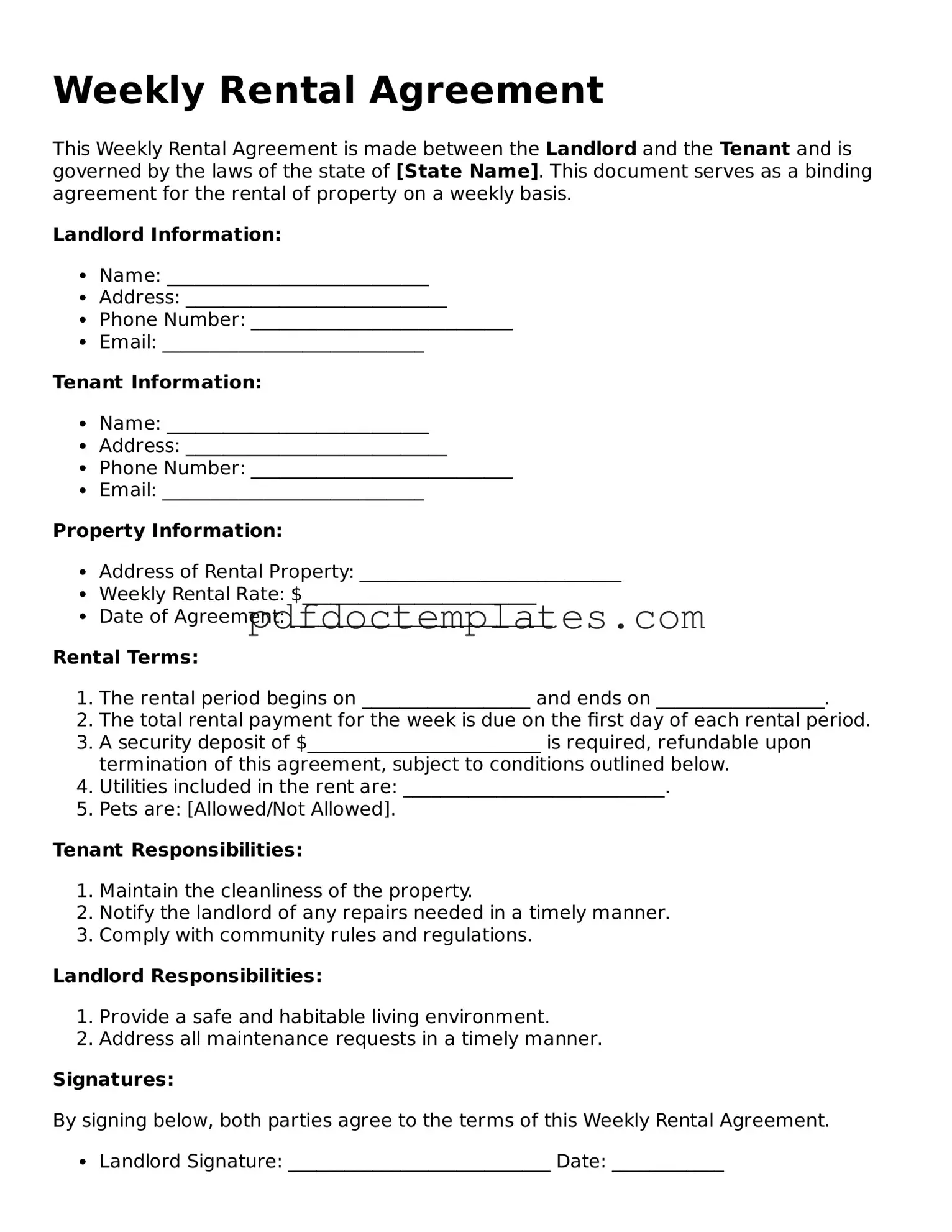Weekly Rental Agreement
This Weekly Rental Agreement is made between the Landlord and the Tenant and is governed by the laws of the state of [State Name]. This document serves as a binding agreement for the rental of property on a weekly basis.
Landlord Information:
- Name: ____________________________
- Address: ____________________________
- Phone Number: ____________________________
- Email: ____________________________
Tenant Information:
- Name: ____________________________
- Address: ____________________________
- Phone Number: ____________________________
- Email: ____________________________
Property Information:
- Address of Rental Property: ____________________________
- Weekly Rental Rate: $_________________________
- Date of Agreement: ____________________________
Rental Terms:
- The rental period begins on __________________ and ends on __________________.
- The total rental payment for the week is due on the first day of each rental period.
- A security deposit of $_________________________ is required, refundable upon termination of this agreement, subject to conditions outlined below.
- Utilities included in the rent are: ____________________________.
- Pets are: [Allowed/Not Allowed].
Tenant Responsibilities:
- Maintain the cleanliness of the property.
- Notify the landlord of any repairs needed in a timely manner.
- Comply with community rules and regulations.
Landlord Responsibilities:
- Provide a safe and habitable living environment.
- Address all maintenance requests in a timely manner.
Signatures:
By signing below, both parties agree to the terms of this Weekly Rental Agreement.
- Landlord Signature: ____________________________ Date: ____________
- Tenant Signature: ____________________________ Date: ____________
